

Leading The Way To Self-Sufficiency And Sustainability

In an era marked by an increasing dependence on modern conveniences and a growing awareness of environmental issues, a unique group of individuals is paving the way for a lifestyle that challenges the status quo. These individuals are the off-grid pioneers, and they have chosen to embrace a way of life that champions self-sufficiency, sustainability, and a deep connection with nature.
Off-grid living, which involves relying on renewable resources, generating one's own energy, and reducing environmental impact, has garnered the attention of people seeking an alternative to the fast-paced, consumer-driven culture of contemporary society. These pioneers have become the torchbearers of a movement that is reshaping our understanding of what it means to live off the grid.
Off-grid pioneers are adventurers who have chosen to break free from the shackles of modern civilization, to take a step back from the hustle and bustle of urban life, and to reconnect with the natural world. They often opt for remote locations, nestled in the heart of nature, where they build sustainable homes, harness renewable energy sources, and cultivate their own food. Their goal is to reduce their ecological footprint and live in harmony with the environment.
One of the defining characteristics of these pioneers is their resourcefulness. They are masters of ingenuity, using their creativity to overcome challenges that come with living off the grid. From constructing eco-friendly homes using natural materials to repurposing everyday items for new purposes, they exemplify the art of making do with what they have.
Adaptability is another key trait of off-grid pioneers. They understand that living off the grid requires flexibility and the ability to embrace change. These individuals are constantly learning new skills, from foraging for wild edibles to harnessing solar or wind energy, and are quick to adapt to the dynamic conditions of life in the wilderness.
Moreover, these pioneers are committed to reducing their environmental impact. They use renewable energy sources like solar panels and wind turbines, collect rainwater, and practice composting and recycling. By doing so, they serve as a shining example of eco-conscious living, demonstrating how it's possible to minimize harm to the planet even while residing in remote areas.
Off-grid pioneers are more than just isolated individuals; they often form tight-knit communities, where like-minded individuals come together to share knowledge, resources, and a sense of camaraderie. These communities not only provide emotional support but also enable the collective development of sustainable practices, from permaculture gardening to regenerative agriculture.
In a world marked by climate change and overconsumption, off-grid pioneers are true beacons of hope. Their dedication to self-sufficiency and sustainability challenges the norms of society and encourages us to reevaluate our own lifestyles. They prove that living off the grid is not just a romanticized dream but a practical and feasible path toward a more harmonious coexistence with the planet.
As we look to the future, the influence of these off-grid pioneers is likely to grow. They are the harbingers of a movement that is not only changing individual lives but also influencing broader discussions about how we can build a more sustainable and interconnected world. In the journey toward self-sufficiency and a deeper connection with nature, these pioneers are leading the way for us all.
Nature's Blueprint For Healthy Gardens
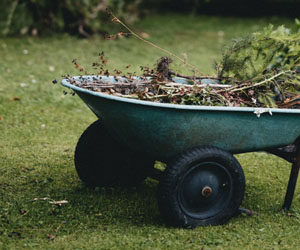 The Basics Of Crop Rotation
The Basics Of Crop Rotation
Crop rotation is a technique that involves growing different types of crops in a specific sequence over multiple growing seasons. The primary objective is to prevent the continuous cultivation of the same crop in the same area, as this can deplete the soil of specific nutrients and increase the likelihood of soil-borne diseases and pests.
Key Benefits Of Crop Rotation
Soil Health: Crop rotation helps to maintain soil fertility and structure by preventing the excessive depletion of specific nutrients. Different crops have different nutrient requirements, so alternating them allows the soil to recover and regenerate.
Pest And Disease Management: Crop rotation disrupts the life cycles of many pests and diseases. By moving crops to different areas each season, you can reduce the build-up of pathogens and pests that are specific to certain plants.
Improved Yields: Healthier soil and reduced pest and disease pressure typically result in higher crop yields. By practicing crop rotation, you can expect better harvests over time.
Weed Control: Some crops can help suppress the growth of specific weeds. By rotating crops strategically, you can naturally reduce weed infestations.
Reduced Soil Erosion: Rotated crops with varying root structures can help improve soil stability, reducing the risk of erosion, especially in sloped areas.
Crop Rotation Strategies
Crop rotation strategies can vary, but a typical system often involves dividing crops into different categories and rotating them following a predetermined sequence. Here's a simple three-category rotation plan:
The Power Of Precision Agriculture
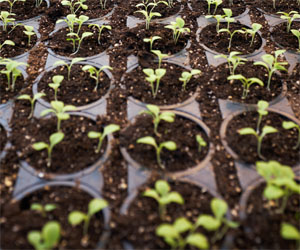 Precision agriculture is an innovative approach to farming that utilizes technology to precisely manage resources and make data-driven decisions throughout the agricultural process. It involves the application of various technologies, including satellite imagery, GPS systems, sensors, and data analytics, to monitor and control the variables affecting crop growth, animal husbandry, and farm operations.
Precision agriculture is an innovative approach to farming that utilizes technology to precisely manage resources and make data-driven decisions throughout the agricultural process. It involves the application of various technologies, including satellite imagery, GPS systems, sensors, and data analytics, to monitor and control the variables affecting crop growth, animal husbandry, and farm operations.
Maximizing Resource Efficiency
One of the primary objectives of precision agriculture is to maximize the efficient use of resources. By collecting and analyzing data on soil health, weather conditions, and crop performance, farmers can make informed decisions regarding irrigation, fertilization, and pest control. This not only results in cost savings but also reduces the environmental impact of farming by minimizing the use of water, energy, and chemicals.
Data-Driven Decision Making
The heart of precision agriculture is data. Farmers collect a wealth of information from various sources, such as drones, sensors, and satellite imagery. This data is then processed and analyzed to provide valuable insights. These insights enable farmers to tailor their actions to the specific needs of their fields, crops, or livestock. For example, sensors can monitor soil moisture levels, helping farmers determine when and where to irrigate, while drones can provide a bird's-eye view of crop health, allowing for targeted interventions.
Enhancing Crop Yield And Quality
Precision agriculture has a direct impact on crop yield and quality. By ensuring that crops receive the precise amount of water, nutrients, and care they need, farmers can significantly increase production. Moreover, by minimizing stressors such as pests and diseases through early detection and targeted treatments, crop quality improves, reducing the need for post-harvest chemicals and additives.
A Sustainable Solution For Water Scarcity
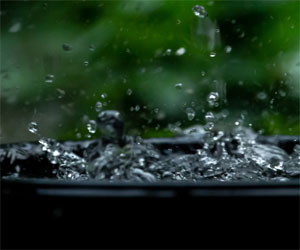 The Importance Of Rainwater Conservation
The Importance Of Rainwater Conservation
Water scarcity is a pressing global concern that affects millions of people, ecosystems, and industries. Many regions of the world are already experiencing the detrimental effects of water shortages, which can lead to droughts, crop failures, and even conflicts over dwindling water resources. Rainwater conservation addresses this issue by harnessing a natural resource that often goes underutilized.
The Collection Process
Rainwater conservation typically begins with the collection of rainwater from rooftops, pavements, or other surfaces. This water, known as runoff, is channeled through gutters and downspouts into storage tanks or cisterns. The collected rainwater can then be filtered and treated to make it suitable for various non-potable uses, such as watering gardens, flushing toilets, and washing vehicles. In some cases, rainwater can even be purified for drinking, further reducing the demand on municipal water supplies.
Environmental Benefits
One of the primary advantages of rainwater conservation is its positive impact on the environment. By capturing rainwater, we reduce the burden on natural water sources, such as rivers and lakes. This, in turn, helps protect aquatic ecosystems and maintains their biodiversity. Moreover, rainwater harvesting reduces soil erosion and minimizes the risk of flooding, as it diverts rainwater away from stormwater drainage systems.
Economic Benefits
Rainwater conservation also provides significant economic benefits. By using rainwater for non-potable purposes, homeowners and businesses can reduce their water bills, resulting in cost savings. In addition, governments and municipalities can save on infrastructure costs associated with water treatment and distribution.
A Guide To Harnessing The Sun's Energy
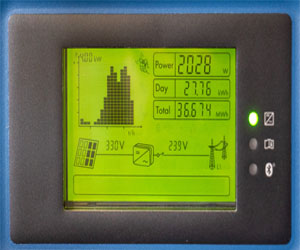 Energy Use Or Storage: The converted electricity can either be used immediately in your home or stored in batteries for later use, ensuring a constant supply of power even when the sun isn't shining.
Energy Use Or Storage: The converted electricity can either be used immediately in your home or stored in batteries for later use, ensuring a constant supply of power even when the sun isn't shining.
Advantages Of Solar Power For Beginners
Environmental Benefits: Solar power is a clean and renewable energy source. It produces no greenhouse gas emissions, reducing your carbon footprint and contributing to a healthier planet.
Lower Energy Bills: By generating your electricity, you'll rely less on traditional utility providers, leading to significant savings on your energy bills.
Energy Independence: Solar panels provide a degree of energy independence. You're less vulnerable to power outages and price fluctuations from utility companies.
Property Value: Homes with solar panels are often more appealing to buyers, potentially increasing the value of your property.
Government Incentives: Many governments offer financial incentives, tax credits, and rebates to promote solar adoption, making it a more affordable option.
Embracing The Future Of Convenience And Efficiency
 Smart Homes: The Cornerstone Of Automated Living
Smart Homes: The Cornerstone Of Automated Living
At the heart of automated living are smart homes. Smart homes are equipped with a wide range of devices and systems that can be controlled remotely and often autonomously. These include smart thermostats, lighting systems, security cameras, and even kitchen appliances. The integration of these devices into a centralized control hub, often accessible through a smartphone or voice-activated device, allows homeowners to create a fully automated and customized living environment.
Convenience Redefined
One of the primary appeals of automated living is the enhanced convenience it offers. Imagine arriving home on a scorching summer day to find your smart thermostat has already adjusted the temperature to your preferred level. Or, picture a scenario where your home's lights gradually brighten in the morning as you wake up, and your coffee maker starts brewing your morning cup without you lifting a finger. These examples illustrate how automation can simplify daily routines and make life more enjoyable.
Energy Efficiency
Automation also plays a pivotal role in promoting energy efficiency. Smart thermostats, for instance, can learn your heating and cooling preferences and create schedules that reduce energy consumption. Smart lighting systems can automatically turn off lights in unoccupied rooms, and smart appliances can operate during off-peak hours to save on energy costs. All of these actions lead to lower utility bills and a reduced environmental footprint.
Security And Peace Of Mind
Automated living extends to home security as well. Modern security systems often feature motion-activated cameras, doorbell cameras, and smart locks.
The Art Of Minimalist Living
 Declutter And Downsize
Declutter And Downsize
The first step in simplifying your space is to declutter and downsize. Take a critical look at your belongings and ask yourself what truly adds value to your life. Consider the Marie Kondo approach of keeping only those items that "spark joy." Donate or sell what you no longer need, and let go of the excess.
Create Functional Spaces
A simplified space is a functional one. Ensure that every item has its place and purpose. This not only makes it easier to find what you need but also reduces visual clutter. Design your spaces with intention, and be mindful of the flow and purpose of each area.
Choose Quality Over Quantity
In the pursuit of simplification, focus on quality over quantity. Invest in well-made, durable items that are built to last. This not only reduces the need for constant replacements but also brings a sense of craftsmanship and beauty to your space.
Declutter Digitally
In our digital age, it's not just physical clutter that can overwhelm us; digital clutter can be equally burdensome. Simplify your digital life by organizing files, emails, and apps. Unsubscribe from unnecessary emails and unfollow social media accounts that don't bring value to your life.
Reduce Decor
In a simplified space, less is often more when it comes to decor. Choose a few meaningful pieces that resonate with you, rather than overwhelming your space with decorations. This approach can create a serene atmosphere and highlight the items that truly matter.
Simplify Your Wardrobe
A simplified wardrobe can be liberating. Consider creating a capsule wardrobe, a collection of versatile pieces that can be mixed and matched. Fewer clothes mean less decision fatigue and a streamlined morning routine.
Maximizing Space, Minimizing Footprint
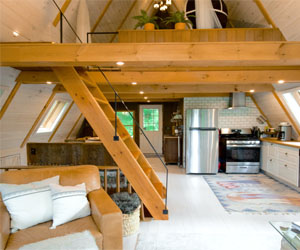 Sustainability: Compact living often goes hand-in-hand with sustainability. Smaller living spaces consume fewer resources in construction and maintenance. Reduced energy consumption and water use contribute to a smaller environmental footprint. Many compact homes incorporate eco-friendly materials and energy-efficient systems.
Sustainability: Compact living often goes hand-in-hand with sustainability. Smaller living spaces consume fewer resources in construction and maintenance. Reduced energy consumption and water use contribute to a smaller environmental footprint. Many compact homes incorporate eco-friendly materials and energy-efficient systems.
Minimalism: Compact living encourages minimalism, which involves owning fewer possessions and simplifying one's life. The focus is on quality over quantity, with an emphasis on what truly adds value to one's life. This approach can lead to reduced stress, lower costs, and more freedom.
Affordability: Smaller living spaces tend to be more affordable, making homeownership more accessible to a broader range of people. Compact living allows individuals to save money and allocate their resources to other priorities, such as travel, education, or experiences.
Urban Living: Compact living is particularly suited for urban environments, where space is at a premium. It allows people to live close to work, amenities, and cultural attractions. The reduced need for long commutes also contributes to sustainability.
Community Focus: Many compact living developments incorporate shared spaces and communal areas, fostering a sense of community among residents. This promotes social interaction and a sense of belonging.